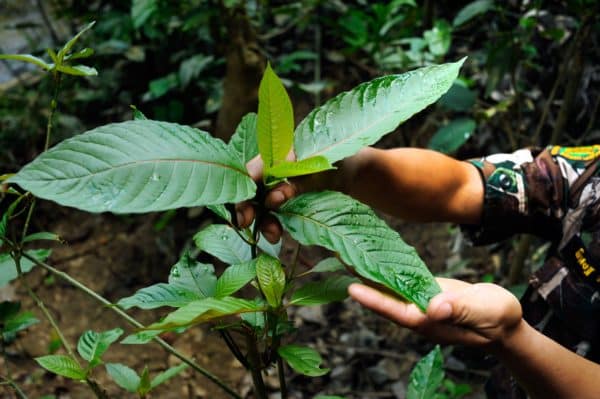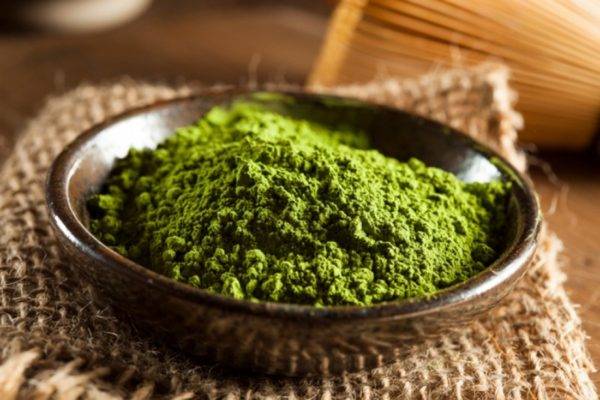Here are some quick answers to commonly asked questions about kratom (mitragyna speciosa).
Q: Is kratom a drug?
A: Kratom is a natural herb, a member of the coffee family, but contains no caffeine. Leaves of the kratom plant are harvested, sometimes fermented, dried, and 3rd party lab tested prior to marketing kratom products to the public.
Q: Why do people take kratom?
A: There are a wide variety of potential human health benefits found in the alkaloids of kratom. The plant has been used in Southeast Asia for many generations. They use it to provide energy for physical labor and some say it gives relief from pain. Other individuals turn to kratom as a far better alternative to alcohol. Still others use kratom in hopes to improve cognitive abilities and mental focus.
Kratom is nothing to toy with. It’s lousy as a recreational “get high” party drug and must not be regarded as such. If someone were to try to treat kratom recklessly, regarding it just as some kind of a fun chemical substance, they’ll be deeply disappointed. Kratom is not a thrill seeker’s high, but is a serious nutritional and noetic substance for specific uses and conditions.
No medical claims, or curative properties, can be mentioned related to kratom, until the FDA approves it from human consumption as a dietary supplement. But you can read all kinds of testimonials from kratom users on various forums and blogs.
Q: Is kratom addictive?
A: Not in the usual sense that we mean when we speak of heroin, cocaine, or nicotine addiction. While a person could get habituated to, and reliant on, kratom to some extent, there are only mild withdrawal symptoms when the person stops using kratom. And unlike opioids, alcohol, and benzos, you don’t need to keep increasing your kratom dose amount or dosing frequency.
Q: Is kratom legal where I live?
A: Laws governing kratom are in flux. You should do an internet search to find out if kratom is legal in your city, county, state, or nation.
Q: Where does kratom come from?
A: Kratom grows wild, or is cultivated on plantations and farms, in Southeast Asia. Strain descriptions and labels will often indicate what region they came from: Malaysia, Indonesia, Thailand, Cambodia, Sumatra, Vietnam, Borneo, Bali, Aceh, Bentuangie, etc.
Q: Can kratom be deadly?
A: No, not all by itself. If you try to abuse kratom by taking too much, you’ll vomit it up. Besides, kratom powder is so bitter, it would be a struggle to swallow more than you should.
Deaths have occurred, but when attributed to kratom use, closer investigation reveals that the deceased individuals were taking other substances, like meth, fentanyl, alcohol, or cocaine when they died.
Mainstream media, in league with Big Pharma, tend to focus on negatives, while ignoring positive reports, medical research into, and case studies of kratom usage.
However, one must be careful with kratom, as with any substance that goes into our bodies and affects our minds. Low doses, taken as far apart in time as possible, using high-quality products, and rotating the strains used will help a person administer kratom to their system effectively.
Q: How much kratom should a person take?
A: It depends, but the LOWEST possible dose amount and LEAST frequency of dosing is recommended in all cases. Low doses tend to energize, while higher doses tend to sedate.
For most folks, that low, once or twice daily dose will probably be somewhere in the range of 3 to 10 grams. Each person has to experiment and determine the ideal dose for their own needs. Once determined, that ideal dose amount and dosing schedule will remain constant for years, with no need to escalate.
Q: What kinds of kratom are there?
A: Kratom is sold primarily as loose ground leaf powder in bags or powder loaded into gelatin capsules and contained in bottles or jars.
Kratom comes naturally in red, green, and white veined leaves. When the leaves are fermented and dried in special traditional ways, they may be called yellow, gold, or chocolate. Then there are extra potent types, such as elephant, horn, dragon. Of special note is the maeng da variety, which is conneiusseur kratom that the Thai pimps famously prefer. The label of a kratom product will tend to include where it was grown.
Thus, a kratom product might be labeled Green Vietnam, Aceh Yellow, Red Maeng Da, Chocolate Bentuangie, or White Elephant.
There are kratom extracts, liquid shots, and resin “candy” which are concentrated and more powerful forms of kratom that must be used cautiously and infrequently, as they can cause you to develop a tolerance.
Q: Are there any dangers in using kratom?
A: Yes. You should not take kratom and operate heavy machinery, drive a car, work on a roof, or do anything that requires physical skills and has risks. Kratom can make you a bit dizzy, dreamy, or spacey. But then again, it could have the opposite effect and make you sharp, focused, more alert.
Too much kratom can result in “wobbles”, which is when your eyes start to vibrate and bounce around. This rare condition can be very annoying. It’s best to lie down and ride it out, but reduce your dose next time to avoid the “wobbles” side effect.
Mixing kratom with alcohol and other substances and drugs can be harmful or fatal.
However, normal routine use of kratom has no serious drawbacks, aside from the possibility of constipation.
Q: How can I avoid kratom constipation?
A: Kratom is a bitter and very dry herb. As such, it sucks moisture out of your body, causing dehydration and constipation (problem moving stools). To prevent this, drink lots more water and consume extra fluids. Also, be sure to walk around and exercise moderately, stay active whne taking kratom, except if it’s painful to do so.
Q: Where can I get some kratom?
A: You may buy kratom online or in such locations as head shops, gas stations, discount tobacco shops, and hippie boutiques. But one must be careful, since kratom is rather trendy, so many places are selling overpriced, untested, and impure versions of kratom in splashy, psychedelic packaging.
Once you find an online vendor or brick-and-mortar supplier of kratom, be thankful that you have avoided the less professional, more dubious sellers out there. Some have been known to contaminate their kratom with phenibut or other dangerous drugs, hoping to enhance its effects.
Look for pure, fresh, organic, all natural, 3rd party lab tested kratom vendors who will show you lab reports for the strains they sell and who engage with customers in social media and are known entities.



